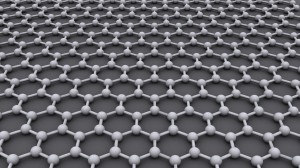
Making Salt Water Drinkable Just Got 99 Percent Easier
Gizmodo, 15 March 2013
Access to steady supplies of clean water is getting more and more difficult in the developing world, especially as demand skyrockets. In response, many countries have turned to the sea for potable fluids but existing reverse osmosis plants rely on complicated processes that are expensive and energy-intensive to operate. Good thing, engineers at Lockheed Martin have just announced a newly-developed salt filter that could reduce desalinization energy costs by 99 percent.
 The Reverse Osmosis process works on a simple principle: molecules within a liquid will flow across a semipermeable membrane from areas of higher concentration to lower until both sides reach an equilibrium. But that same membrane can act as a filter for large molecules and ions if outside pressure is applied to one side of the system. For desalinization, the process typically employs a sheet of thin-film composite (TFC) membrane which is made from an active thin-film layer of polyimide stacked on a porous layer of polysulfone. The problem with these membranes is that their thickness requires the presence of large amounts of pressure (and energy) to press water through them.
The Reverse Osmosis process works on a simple principle: molecules within a liquid will flow across a semipermeable membrane from areas of higher concentration to lower until both sides reach an equilibrium. But that same membrane can act as a filter for large molecules and ions if outside pressure is applied to one side of the system. For desalinization, the process typically employs a sheet of thin-film composite (TFC) membrane which is made from an active thin-film layer of polyimide stacked on a porous layer of polysulfone. The problem with these membranes is that their thickness requires the presence of large amounts of pressure (and energy) to press water through them.
Lockheed Martin's Perforene, on the other hand, is made from single atom-thick sheets of graphene. Because the sheets are so thin, water flows through them far more easily than through a conventional TFC. Filters made through the Perforene process would incorporate filtering holes just 100 nm in diameter—large enough to let water molecules through but small enough to capture dissolved salts. It looks a bit like chicken wire when viewed under a microscope, John Stetson, the Lockheed engineer credited with its invention, told Reuters. But ounce for ounce, its 1000 times stronger than steel.
“It's 500 times thinner than the best filter on the market today and a thousand times stronger,” Stetson explained to Reuters. “The energy that's required and the pressure that's required to filter salt is approximately 100 times less.”
Lockheed is reportedly already ramping up production efforts for the filters—and trying to find a way to keep them from tearing—though there are no announced plans on when they'd hit the market. Tomorrow isn't soon enough. [Reuters via MetaFilter – Wikipedia – Image: Shutterstock/Lightspring]
Phi Beta Iota: This is earth-changing huge. It allows for the immediate design and construction of filterning stations all over the world that put a stop to any further draw down on the aquifers, and as soon as possible, efforts should begin to refill the aquifers. Fracking should be stopped at once. A study should be commissioned to explore the implications of a massive global application of this Lockheed technology such that rising sea levels are offset by desalination and the irrigation of all that is now desert. BRAVO ZULU Lockheed!
See Also:
Search: Aquifers of the World + Water RECAP



